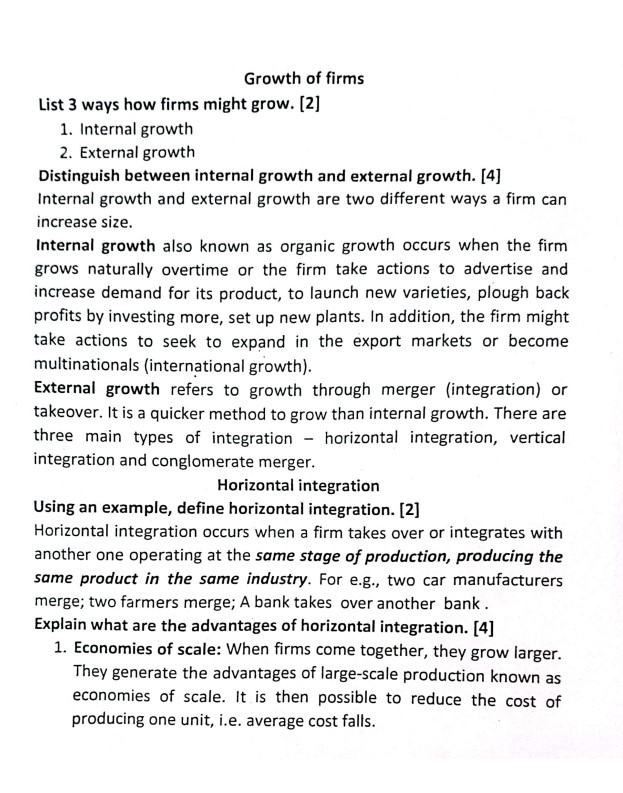Exploring External Growth through Integration – Topper Model in Economics (Grade A+)
Summary:
The text discusses how firms can grow, including internal growth and external growth. External growth can happen through merger or takeover, which can be horizontal integration (two firms in the same industry merge), vertical integration (a firm merges with another involved at a different stage in the supply chain), or conglomerate merger (unrelated firms merge). The advantages and disadvantages of each type of integration are discussed, including economies of scale, greater market share, rationalization, monopolies, job losses, and management problems.
Excerpt:
Exploring External Growth through Integration
Growth of firms
List 3 ways how firms might grow. [2]
- Internal growth
- External growth
Distinguish between internal growth and external growth. [4] Internal growth and external growth are two different ways a firm can increase size. Internal growth also known as organic growth occurs when the firm
grows naturally over time or the firm takes actions to advertise and increase demand for its product, launch new varieties, plow back profits by investing more, and set up new plants. In addition, the firm might take action to seek to expand in the export markets or become multinational (international growth).
External growth refers to growth through a merger (integration) or takeover. It is a quicker method to grow than internal growth. There are three main types of integration — horizontal integration, vertical integration, and conglomerate merger.
– Horizontal integration
Using an example, define horizontal integration. [2] Horizontal integration occurs when a firm takes over or integrates with another one operating at the same stage of production, producing the same product in the same industry. E.g., two car manufacturers merge; two farmers merge; A bank takes over another bank.
Explain what are the advantages of horizontal integration. [4]
1. Economies of scale: When firms come together, they grow larger. They generate the advantages of large-scale production known as economies of scale. It is then possible to reduce the cost of producing one unit, i.e. average cost falls.
2. Greater market share: By merging with another firm producing the same product, a direct competitor is eliminated. This allows the firms to increase market dominance and profits.


Reviews